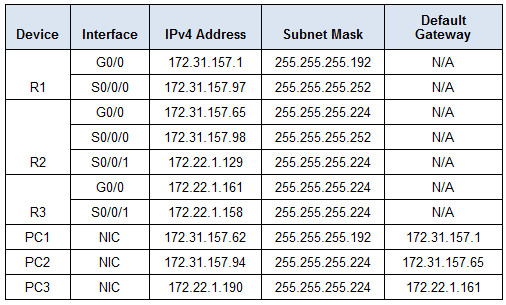

This exit interface is one of the interface of our router. If we use exit interface, we define the interface that we will use to go through the destination interface. Here, we use the interface IP address of the router that we will pass through on the way to the destination. If we use Next Hop IP address, this shows the router that the traffic will go after our router. Here, Destination Network IP Address shows the ip address of our destination network and Destination Subnet Mask shows the destination network’s subnet mask.įor the last parameter, we have two different ways. To configure a static route, we use three parameters. Think about it, defining all the routes in a large network, isn’t it a very difficult job? Beside, in large networks, static routing is also used beside dynamic routing. This work is not an easy work, so static routing is used in small networks.

To access a network, which nodes we need to pass through, we can define such steps. In other words, we can define each routing steps one by one. In Static routing, we can enter all the routes manually to the router. There is also another staatic routes called floating static routes that we can change administrative distance of this routes. In static routes the administrative distance is as default value.
Summary route calculator ipv4 manual#
Static routing is the manual method of routing and Dynamic routing is the routing that is done with the help of Routing Protocols. One of them is Static Routing and the other is Dynamic Routing. The RTT of a Ping could be slower then the time it takes to request and receive other packets, such as website-, mail- or ftp-traffic.Ī more detailed explanation of the anatomy of ICMP, the protocol used by ping, can be found in RFC 792.In computer networks, routing can be done with two methods.

When the destination host receives the ping it responses with a ping reply (aka ech0 reply or type 8 Echo Reply). Reply from 1.2.3.4: TTL expired in transitīy default our online ping tool sends packets (aka echo or type 8 Echo Request) away with a TTL of 64. If a ping packet reaches a TTL of zero, the device discards the packet and ping will output the following response: If a router or other IP device along the route receives a ping packet, it decrements the TTL counter by one. TTL is a mechanism that counts hosts or devices it passes along the route from the source to it's destination. TTL prevents infinite looping or circular routing: a scenario where an ICMP packet bounces in a infinite loop among intermediate hosts. Part 2: icmp_seq tells us that this was the fourth (response) packet in sequence. Part 1: This part tells us that a ping of 64 bytes of data is received from IP address 1.2.3.4. Let's decipher one of the lines from the online ping output:Ħ4 bytes from 1.2.3.4: icmp_seq=4 ttl=58 time=9.98 ms

What does the Output of Online Ping mean?Īlthough ping is primairly used to verify if a particular IP device is reachable, it can also be used to get a rough indication of speed or performance.


 0 kommentar(er)
0 kommentar(er)
